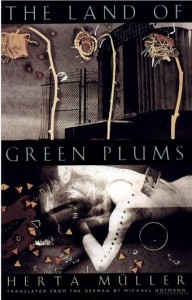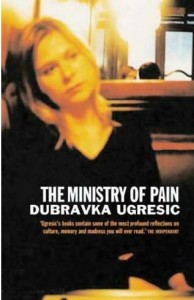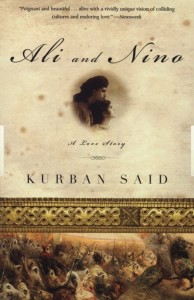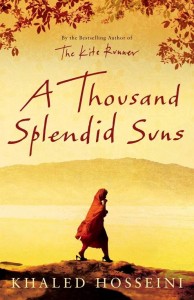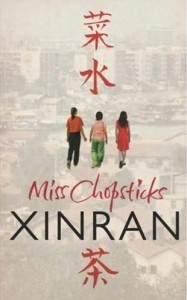Open Cities 13 Winter Break Reading
Fiction vs Reality
Sometimes fiction may reveal more than statistics. In a footloose world, bookstalls in airports and railway stations prepare travellers for their journey. On display are travelogues on cities they intend to visit, reassuringly from the perspective of their point of departure. For those with an appetite for greater displacement there are authors from ethnic minorities who unravel their ambiguous relations between their adoptive countries and their home lands. Like many travellers they are living in cosmopolitan cities and contributing to their make-up. Written by displaced people from all over the world novels about their present or their past may shed some different perspectives on the meaning of ‘open cities’.
Multiculturalism from West to East
Staying in Europe, there is Herta Mueller’s The Land of Green Plums (1999, Granta Books). This tale of exclusion takes place in Rumania under dictatorship. In an atmosphere of all pervasive fear students from ethnic minorities who are expected to enter integrated adult life are dismissed from their jobs, their only tie with legitimacy. They perceive themselves as ‘transfinite’, without a place between their confused exiled ancestry, their non belonging to majority rule, their dehumanisation by torture, abuse and deception. Hanging themselves and jumping from windows they exercise ultimate self-exclusion. Emigrated to Berlin, fleeing Ceaucescu’s Securitate, Mueller writes about the limbo which a growing number of emigrates, immigrants, in-migrants inhabit – for ever searching a self, a compromise between their childhood memories and the persona constructed in their adopted cities.
Conversely, The Ministry of Pain by Dubravka Ugresic (2005, Telegram) tells the tale of an immigrant from Croatia to Western Europe. Refugee in the Netherlands, she has been asked to teach the differences between the cultures which had made up Yugoslavia. Yet, she is criticised by post-Yugoslavia political correctness by Dutch natives and ‘émigré’ ex-Yugoslavs alike. She conveys her dual sense of not belonging anywhere anymore while grappling with the humility of an educated woman who is forced to live off social handouts. Meanwhile, her displaced setting enables her to reflect on the discords between the various ethnic factions during the demise of Yugoslavia and ever after.
Further afield in time and space, Ali and Nino by Kurban Said (2000, first published in Germany in1937, Vintage) takes place in the Caucasus during the Russian occupation between a Muslim Azerbaijani boy and an Orthodox Christian Georgian girl. Seen through the eyes of the novel’s well to do adolescents the novel depicts the customs of Muslims, Armenians and Georgian Orthodox Christians in Baku, in a summer resort in the Georgian mountains and in Persia. A fascinating background to cultural pluralism at the interface of Europe and Asia the story takes off before the first world war and the Russian revolutions and leads through the first world war and its disastrous effect on the short lived Republic of Azerbaijan. Abundance of oil had allured Nobel, the Russians and the Ottomans, followed by the British who in leaving too early opened the flood gates to a Soviet invasion. Lessons for openness are that territorial conquests have no ideological bounds but they are bound to destroy long standing multicultural coexistence.
Khaled Hossein’s A Thousand Splendid Suns (2007, Bloomsbury) is another tale of geopolitical upheaval, this time in Central Asia. The backcloth is the fall of the Afghan monarchy, Soviet domination till 1992, subsequent Taliban regime (1964-2003) to the story of Mariam, an illegitimate child of a lower cast Harami mother and a wealthy father who married her off to an old man. Displaced, disgraced, maltreated she builds a world of female relations to counter male violence with ultimate violence, while continuously longing for the impossibility of a ‘home’ in the nomadic life of a refugee. In The Kite Runner (2003, Bloomsbury), Khaled Hossein reflects his own trajectory as a rich exile boy of a Pashtun tribe to the United States, leaving his troubled world behind while destroying his most loyal supporter, a Hazara servant descendant of Moguls. Here the cultural clashes are among local Muslim factions, temporary criss-cross allegiances with the West, but also male rivalry and betrayal, a legacy which cannot bring the remorse return of the author any solace.
Miss Chopstick by Xinran (2008, Vintage) is an account of cultural clashes between country and city lived by women. It is about how three sisters from rural China grapple with life in the big city Nanjing against the context of breathtaking social change since the cultural revolution. Through these three trajectories the female author also comments on the chances of differently gifted girls in a society which is reinforcing its class structure. While openness of the city gives all of them a better life chance than the countryside, menial and hard work has more survival power then opportunities for intellectuals.
This is just a random sample of an enormous wealth of literature by authors who have experienced displacement, how cities have received them and how they have adapted to their host cities in turn.

